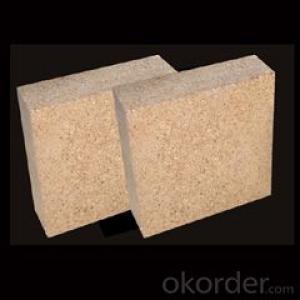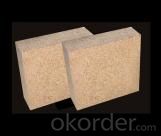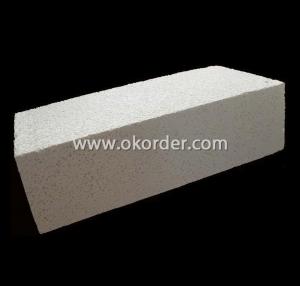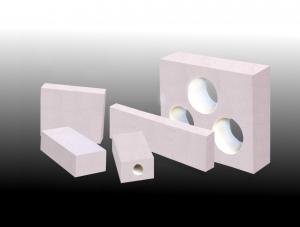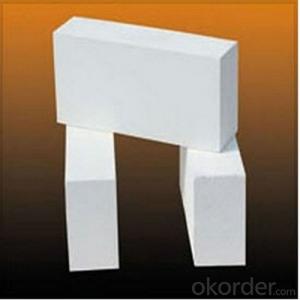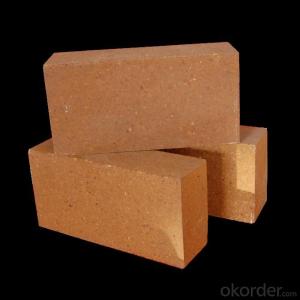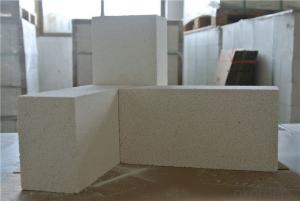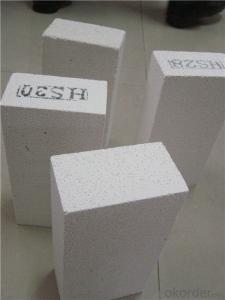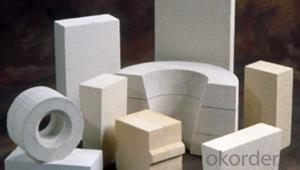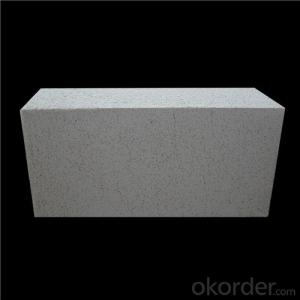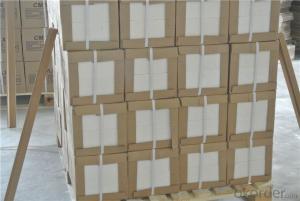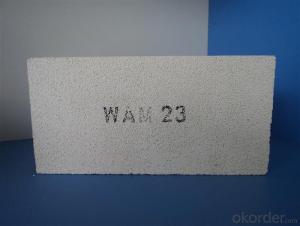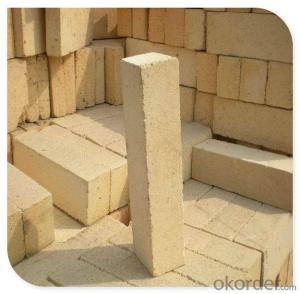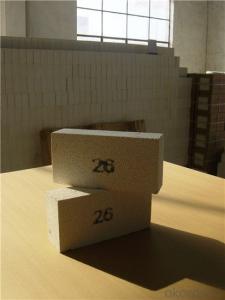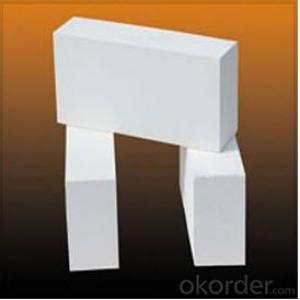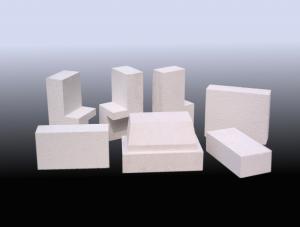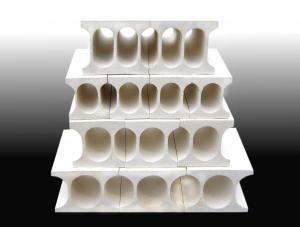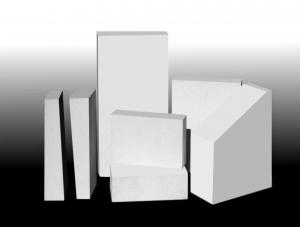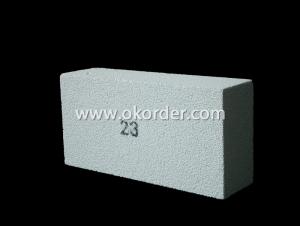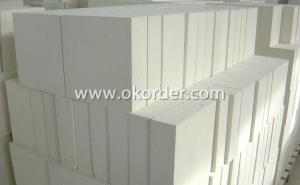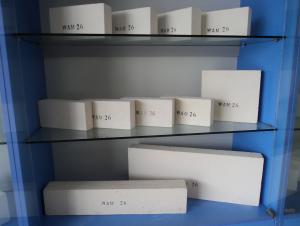Insulating Fire Brick - Refractory Thermal Insulation Magnesia Fire Bricks for Electric Furnace
- Loading Port:
- Shanghai
- Payment Terms:
- TT OR LC
- Min Order Qty:
- 10 m.t.
- Supply Capability:
- 100 m.t./month
OKorder Service Pledge
OKorder Financial Service
You Might Also Like
Quick Details
| Place of Origin: | (Mainland) | Shape: | Brick | Material: | MgO-Carbon Brick |
| SiO2 Content (%): | customized | Al2O3 Content (%): | customized | MgO Content (%): | ≥78 |
| CaO Content (%): | 0 | Refractoriness (Degree): | 1770°< Refractoriness< 2000° | Model Number: | YH-MT10B |
| Brand Name: |
| Bulk density(g/cm³): | ≥2.9g/cm³ | Apparent porosity(%): | ≤5 |
| C(%): | ≥10 | compressive strengthMPa): | ≥35 | High Temperature Flexural strength(MPa): | ≥6 |
Packaging & Delivery
| Packaging Detail: | The refractory thermal insulation magnesia fire bricks for electric furnace is packed on wooden pallets with three layers water-proof shrink film and tightened with plastic/steel bandages,when in the transportation process of magnesia carbon brick,we should pay attention to moisture and light handling. |
| Delivery Detail: | 7-15 working days |
Specifications
1.High slag resistance& high refractoriness&high strength
2.Approved by SINOSTEEL
3.Factory direct price
4.ISO certificate
Refractory Thermal Insulation Magnesia Fire Bricks for Electric Furnace
![]()
YH-MT Series refractory thermal insulation magnesia fire bricks for electric furnace are designed and manufactured as per the different usage parts and working conditions of electric furnace, converter and ladle. It is shaped by high purity and high compact or large crystalline fused magnesia and high purity graphite as main materials and phenolic resin as binder.This kind of lime kiln used magnesia brick is mainly applied for the lining parts of electric furnace and converter.Directly touching molten steel and slag,it has the advantages of high strength,high slag resistance,good thermal stability and high refractoriness.According to melting conditions,different grades of magnesia carbon refractory brick should be chosen for the various usage parts of furnace body and ladle.
Main Chemical Compositions and Physical Properties
![]()
| Items | YH-MT10A | YH-MT10B | YH-MT14A | YH-MT14B | YH-MT16A | |
| Chemical Compositions(%) | MgO | 80 | 78 | 76 | 74 | 74 |
| C | 10 | 10 | 14 | 14 | 16 | |
| Apparent Porosity(%) | 4 | 5 | 4 | 5 | 5 | |
| Bulk Density(g/cm³) | 2.95 | 2.9 | 2.95 | 2.95 | 2.9 | |
| Compressive Strength(Mpa) | 40 | 35 | 40 | 40 | 35 | |
| High Temperature Flexural Strength(Mpa) | 6 | 6 | 10 | 10 | 7 | |
Product Show of Refractory Thermal Insulation Magnesia Fire Bricks
Packing Method of Refractory Thermal Insulation Magnesia Fire Bricks
![]()
1.The refractory thermal insulation magnesia fire bricks for electric furnace will be packed as the standard of exporting, used wooden pallet with plastic/steel bandages,when in the transportation process of magnesia carbon brick,we should pay attention to moisture and light handling.
2.The packing of refractory thermal insulation magnesia fire bricks for electric furnace will accept customer's requirement if any.
3.Delivery within 7-15 working days after your payment.
4.Fast delievery accepted by customers.
Our Service ![]()
1. We could send the Technology Staff to help you to install
2.We could keep in touch with you any time for answering your questions
3.We could design the Refractory Solution for you according to your Drawing of Vessel
4.We could provide you a perfect after sale service
- Q: Are insulating fire bricks resistant to chemical attack?
- Insulating fire bricks are generally known for their resistance to chemical attack. These bricks consist of high-purity refractory materials, such as alumina or silica, which possess excellent chemical stability. Their design allows them to endure high temperatures, making them highly resistant to the corrosive effects of chemicals. However, it's worth noting that the extent of chemical resistance can vary depending on the specific composition of the insulating fire brick and the type of chemical used. In some instances, certain aggressive chemicals may still cause gradual degradation or erosion. Hence, it is always advisable to consult the manufacturer or supplier for precise information regarding the chemical resistance of insulating fire bricks, considering their intended application.
- Q: Are insulating fire bricks resistant to moisture or water damage?
- Yes, insulating fire bricks are resistant to moisture or water damage. They are designed to withstand high temperatures and do not absorb water, making them a suitable choice for applications where moisture or water exposure is a concern.
- Q: Are insulating fire bricks resistant to carbon monoxide attack?
- Yes, insulating fire bricks are generally resistant to carbon monoxide attack. Insulating fire bricks are made from materials that have a high resistance to high temperatures and chemical corrosion, including carbon monoxide. These bricks are often used in applications where high temperatures and exposure to various gases, including carbon monoxide, are common, such as in furnaces, kilns, and fireplaces. The composition of insulating fire bricks allows them to withstand prolonged exposure to carbon monoxide without deteriorating or reacting with the gas. However, it is important to note that prolonged exposure to extremely high levels of carbon monoxide can eventually cause damage to any material, including insulating fire bricks. Therefore, it is still necessary to ensure proper ventilation and safety measures when dealing with carbon monoxide in any setting.
- Q: Do insulating fire bricks require a protective coating?
- Insulating fire bricks do not necessarily require a protective coating, as they are already designed to withstand high temperatures and provide insulation. These bricks are made from lightweight refractory materials that have excellent thermal conductivity properties, allowing them to retain heat and prevent heat transfer. However, in some specific applications where the bricks may come into contact with corrosive materials or aggressive chemicals, a protective coating may be necessary to enhance their durability and resistance. Ultimately, the need for a protective coating depends on the specific usage and environment in which the insulating fire bricks are being used.
- Q: Can insulating fire bricks be custom-made?
- Yes, insulating fire bricks can be custom-made. Insulating fire bricks are typically made from lightweight materials such as vermiculite, perlite, or refractory fibers, which can be easily molded into various shapes and sizes. This flexibility allows manufacturers to create custom-made insulating fire bricks to meet specific requirements and applications. Customization options may include variations in dimensions, thermal conductivity, compressive strength, and density. By tailoring the composition and design of insulating fire bricks, they can be optimized for specific temperature ranges, insulation requirements, and environmental conditions. Therefore, customers can work with manufacturers to develop custom solutions that best suit their unique needs.
- Q: Can insulating fire bricks be used in the construction of reheat furnaces?
- Indeed, reheat furnaces can utilize insulating fire bricks in their construction. These bricks possess the capability to endure elevated temperatures and offer exceptional insulation, rendering them exceptionally suitable for furnaces. With their low thermal conductivity, insulating fire bricks aid in diminishing heat loss and enhancing energy efficiency within the furnace. Moreover, they exhibit remarkable resistance to thermal shock, enabling them to withstand swift temperature fluctuations encountered during the reheat procedure. All in all, insulating fire bricks emerge as a fitting option for reheat furnace construction, as they foster improved heat retention and energy conservation.
- Q: Do insulating fire bricks have a high insulation efficiency?
- Indeed, the insulation effectiveness of insulating fire bricks is quite high. These bricks are specifically engineered to possess exceptional thermal insulation properties. They are crafted from lightweight materials with low thermal conductivity, such as various types of refractory clay or alumina. This composition enables them to effectively minimize heat transfer via conduction, thereby making them exceedingly efficient at retaining heat within structures or appliances. Additionally, insulating fire bricks exhibit considerable porosity, which amplifies their insulation capabilities even further. The presence of numerous small air pockets within the bricks diminishes heat transfer through convection, as the air acts as an insulating barrier. This distinct structure aids in maintaining a constant and stable temperature, regardless of whether it is within a furnace, kiln, or any other high-temperature setting. Furthermore, insulating fire bricks possess remarkable resistance to thermal shock, allowing them to endure rapid temperature changes without fracturing or deteriorating. This attribute is particularly vital in applications where temperature fluctuations are commonplace, as it guarantees the longevity and effectiveness of the insulation. In summary, insulating fire bricks are renowned for their exceptional insulation efficiency. They offer superb thermal insulation, prevent heat loss, and contribute to energy conservation. Whether utilized in industrial environments or residential constructions, these bricks deliver reliable insulation performance and enhance the overall energy efficiency of the system in which they are employed.
- Q: Can insulating fire bricks be used in chimneys or flues?
- Yes, insulating fire bricks can be used in chimneys or flues. These bricks are designed to withstand high temperatures and provide excellent insulation, making them suitable for lining chimneys and flues to prevent heat transfer and improve overall efficiency.
- Q: Are insulating fire bricks resistant to acid attack?
- Yes, insulating fire bricks are resistant to acid attack.
- Q: Are insulating fire bricks resistant to sulfur dioxide?
- In general, insulating fire bricks do not possess resistance against sulfur dioxide. This highly corrosive gas can undergo reactions with the components of insulating fire bricks, resulting in their deterioration and diminished efficiency. Therefore, it is crucial to utilize refractory materials that are specifically engineered to endure exposure to sulfur dioxide, whenever such a requirement exists for the intended application.
Send your message to us
Insulating Fire Brick - Refractory Thermal Insulation Magnesia Fire Bricks for Electric Furnace
- Loading Port:
- Shanghai
- Payment Terms:
- TT OR LC
- Min Order Qty:
- 10 m.t.
- Supply Capability:
- 100 m.t./month
OKorder Service Pledge
OKorder Financial Service
Similar products
Hot products
Hot Searches
Related keywords
